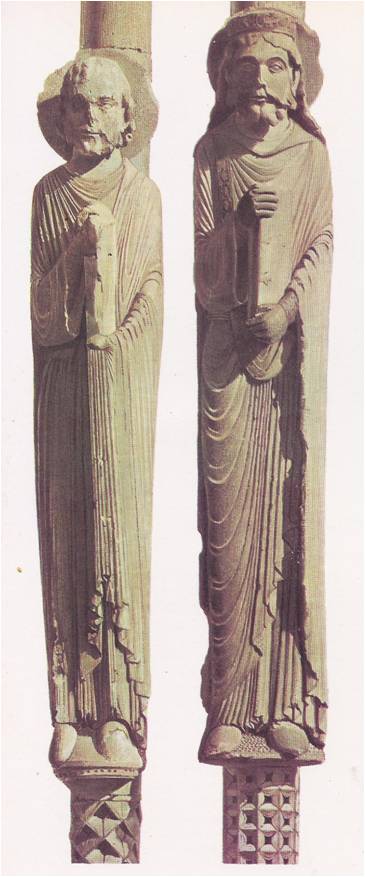IN THE YEAR 1134, in the town of Chartres in France, the church burned down. The church was a cathedral — that is, it was the church of a bishop. The bishop at that time was Theodoric and he immediately began the construction of another cathedral. He knew that the task would not be an easy one; it meant raising large sums of money and finding many workmen and the actual work of building would take years. Bishop Theodoric allowed nothing to stop him, he won the support of the people, of commoners and nobles alike. An eye-witness, who visited Chartres in 1144, wrote that “kings, princes, mighty men of the world, puffed up with honours and riches, men and women of noble birth,” helped in the work, pulling wagons loaded with “wine, corn, oil, lime, stones, beams and other things necessary to sustain life or build churches. . . .” Although a thousand men and women were drawing wagons, “yet they go forward in such silence that no voice, no murmur, is heard. . . When they pause on the way no words are heard but confessions of guilt, with supplications and pure prayer. . . . The priests preach peace, hatred is soothed, discord is driven away, debts are forgiven, unity is restored.” The cathedral was complete in 1180, but fourteen years later a fire broke out again, destroying most of the building. It also destroyed the towns people’s houses. They would have given up both the church and the town if it had not been for a representative of the pope. The fire was God’s punishment for their sins, he warned, and now they must restore the cathedral and put up new houses. The towns people did as he said. Money for the rebuilding of the church …
Read More »The Church and the Empire A.D. 527-1261
CHRISTIANITY, as the official religion of Byzantium‚ was under the control of the government. The emperor was the head of both church and state and high church officials in the East recognized him as the religious leader of the land. One of them wrote, “Nothing should happen in the Church against the command or will of the Emperor.” The church organization was similar to that of the state. As its head, but under the emperor, was the patriarch of Constantinople, who was appointed by the emperor. The appointment had to be approved by high church officials, but actually they never went against the emperor’s wishes. The emperor also had power to remove the patriarch from office. Under the patriarch were the metropolitans and archbishops, who had charge of large cities and important centers in the provinces. Then came the bishops and their staffs, which included the local priests. Unlike the priests of the West, those of the East were usually married. All the high-ranking officials of the church were unmarried and came from monasteries — places where monks and other religious men lived by themselves and spent their lives in prayer and service to God. MONASTERIES AND CONVENTS There were a great many monasteries in the East and many similar places for women, called convents. Many of these institutions helped the poor. Some provided hospitals, while others ran schools where the children of the poor could be educated. In time there came to be so many monasteries that they created problems for the empire. Many people went to live in them to escape from the army, or from the burden of public office. Monasteries became very wealthy, holding great tracts of land. Since they were usually not subject to taxes, the empire lost a large portion of its land-tax money …
Read More »

